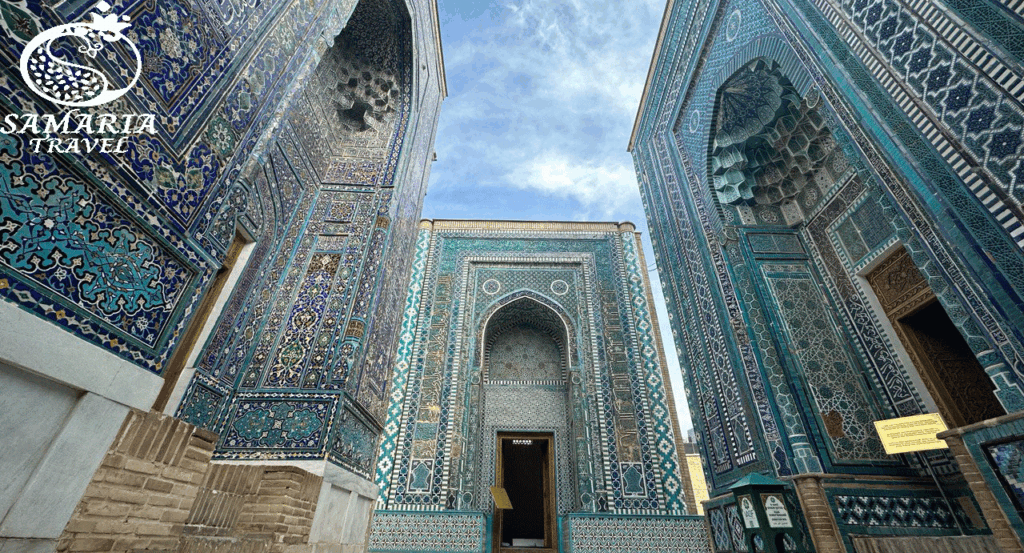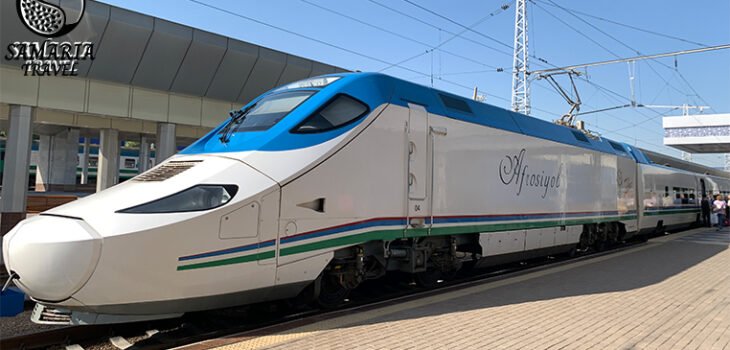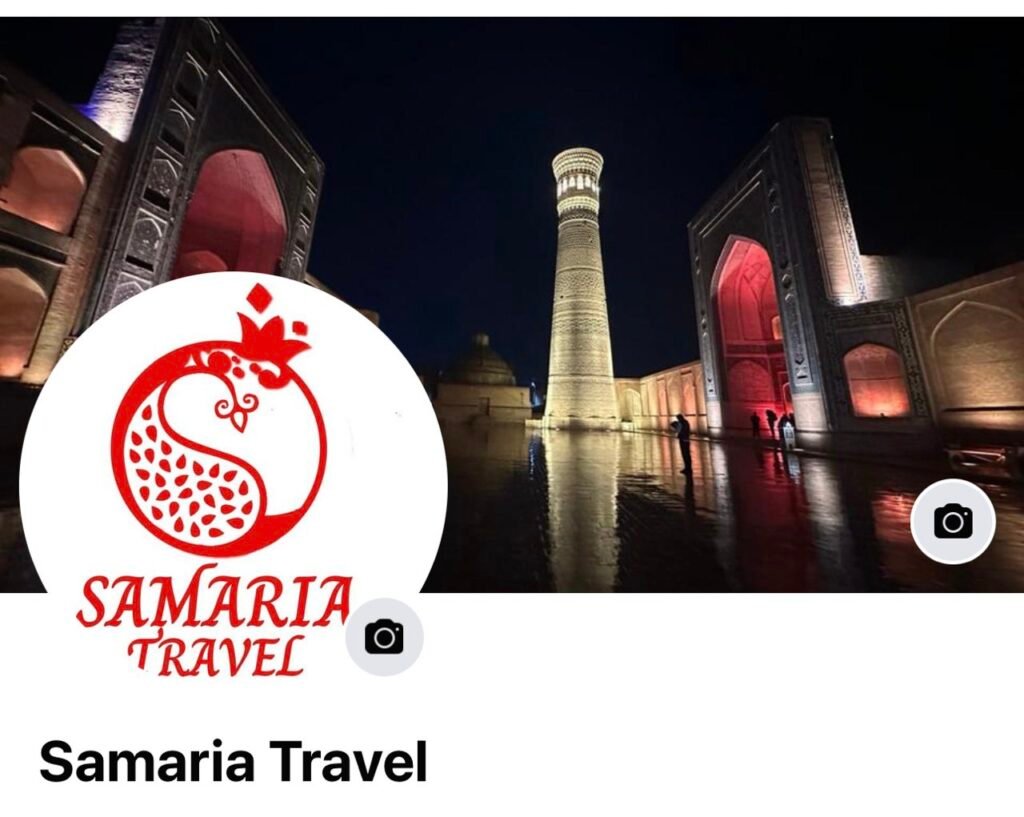
Uzbekistan 5 nights 6 days top destinations: Tashkent—Bukhara—Samarkand
TRIP OVERVIEW
Traveling through these ancient cities such as Tashkent, Bukhara and Samarkand is more than a vacation; it is a journey through time. Each city has its own unique history, art, architecture and cuisine. The highlights of these 6 days tour are: walking through old town in Bukhara is like stepping into XVI century, visiting Fort called Ark which was resident of last Emir (King) of Bukhara, watching captivating light at a stunning historical Registan square of Samarkand by night and more.
Have sightseeing in the most fascinating ancient cities of the Great Silk Road
Travel between cities in the fastest train of Uzbekistan
This tour is for you and your private party
Day 1: Arrival in Tashkent
Meet outside of airport terminal building by driver and guide. Check in time to hotel is after 14:00.
The sightseeing in Tashkent city:
Visit some of the top attractions in Tashkent on this day trip. Tashkent is the capital of Uzbekistan and has approximately 3 million inhabitants. The city is located in the north eastern part of the republic, in the valley where the river Chirchik is located. In the North of Tashkent the snow-covered tops of Big and Small Chimgan mountain can be seen. Tashkent is the fourth largest in the Commonwealth of Independent States after Moscow, St Petersburg and Kiev.
The sightseeing in Tashkent city:
- Earthquake Memorial— this memorial is devoted to the tragic date of earthquake in Tashkent on April 26th of 1966 and is erected in the approximate spot of the earthquake epicenter.
- Khazrati Imom Complex (XVI-XX centuries) the historical spiritual heart of the city (consists of functioning Friday mosque “Khazrati Imom Mosque” from 2007, Barak-Khan Madrassa from XVI-XVIII centuries—present-day serving as shopping place, Tellya Sheikh Mosque from XIX century, Muyi Moborak Library— holds rare Oriental manuscripts collection, among which the world-famous Caliph Osman-Koran from the VII century and the mausoleum of Abu Bakr Mohammed Kaffal Shashi, the first Koran preachers of Central Asia, who was also a famous scientist).
- The market Chorsu (“four roads” in Uzbek, the commercial heart of the city and has been for hundreds of years).
- Metro riding (the only Central Asian Underground, built in 1977).
- Amir Timur Square—the centre of the modern city, is green space with plenty of flowers and fountains. The square covers the most important buildings both political and cultural. In the middle of the square is the statue of Amir Timur (known in Europe as Tamerlane) on horseback, hotel “Uzbekistan” which was built in 1974, University of Law (former Women’s Gymnasium), Museum of Amir Timur, well-known Tashkent Clock Towers (the first tower was constructed in 1947 to house the clock mechanism from Eastern Prussia, a war trophy brought back to Tashkent by watchmaker Ayzenshteyn), and Uzbekistan Forums Palace.
Day 2: Travel by train from Tashkent to Bukhara and have sightseeing in the city
The driver comes to the reception lobby of your hotel and picks you up. Tour starts at 07:00 am (starting time can be change by train time).
Today you learn about Art, history, old town, architectural monuments and food: The UNESCO listed city Bukhara has it all. Bukhara, one of the most ancient cities of Central Asia, has a 2500-year-old history. Bumichkat “New Castle”, Al Madina as-sufriyya “Copper City”, Madinat at-tujjor “City of Traders”, Foxira “Honorable City” are some the names given to this unique city.
The sightseeing in Bukhara city:
- Bolo Hauz mosque (XVIII century)— it is a functioning Friday mosque from XVIII century and consists of reservoir, mosque and minaret (Note: this mosque you can visit from outside, since it is functioning Friday mosque).
- The Citadel Ark (I-XX centuries)— the construction of the citadel is dated to beginning of the 1st millennium BC. During the history the fortress has been destroyed several times but has been restored again. All buildings of the citadel have been reconstructed mainly during the XVIII-XX centuries.
- Poi Kalon complex (“The foot of tall” in Uzbek) from XII-XVI centuries. Consisting of mosque, madrassah and minaret, one of the great centre of trade and scholarship along the Silk Road. The beauty of the minaret amazed Genghis Khan (Temuchin or Temujin).
- Magoki-Attari Mosque— Central Asia’s oldest surviving mosque. Prior to the Arab invasion there was a Buddhist monastery and then a Zoroastrian temple on the site. It now houses the dull Museum of the History of Carpet Weaving.
- Labi Hauz Complex (“The edge of the pond” from Persian) constructed by Nadir Divan Begi, The Grand Vizier of Bukhara, around 1620.
- XVI century Synagogue— to the south of Labi Hauz Square spreads the Jewish Quarter of the old town. Jews have been an important minority in Bukhara since their forced migration from Merv and Shiraz in the 14th century (the majority having emigrated to Israel and the US since 1970s). (Note: most of the time it is closed if it is open travelers can visit inside and see old Torah)
- Statue of Hodja Nasruddin— the homespun philosopher and humorist on his donkey. Elsewhere in the world he is generally accepted as Turkish, but Uzbeks claim he was born in Bukhara and is one of their own.
Day 3: The sightseeing in old town Bukhara and afternoon catch a train to Samarkand
Visit some of the top attractions outside of Bukhara. The trip today starts with Chor Minor— an unusual madrassah with four minarets, Naqshbandi Sufism complex— wherethe founder of a Sufi order which was later named Naqshbandi was buried, The summer palace of Bukhara’s emirs—wheretravelers can see a Soviet and Bukharian architectureand Chor Bakr Necropolis—resting place of Imam Sayid Abu Bakr and his three brothers Fazl, Ahmed and Hamed, all direct descendents of the Prophet.
The sightseeing in Bukhara city:
- Chor Minor— an unusual madrassah in Bukhara. The name means “Four Minarets”. Each tower has a different decoration.
- Naqshbandi Sufism complex— Islamic saint Bakhauddin Naqshband, the famous Asian philosopher and Sufi, the founder of a Sufi order which was later named Naqshbandi, lived in XIV century. He became patron saint and the complex is the holiest site in Bukhara. He made 32 times the Hajj pilgrimage to Mecca and local people consider this place as little Mecca.
- The summer palace of Bukhara’s emirs— the palace was built in 1911 for the last emir, Amir Alim Khan, the building compound elements of both Russian and traditional Bukharan architecture.
- Chor Bakr Necropolis—In 970 Imam Sayid Abu Bakr and his three brothers Fazl, Ahmed and Hamed, all direct descendents of the Prophet, were laid to rest in the village of Sumitan, seven kilometers west of Bukhara. They instilled the site with an immediate sanctity that soon attracted legions of the rich and famous claim and famous clamoring to claim holiness by association.
Late afternoon transfer to Bukhara train Station 15 km and catch the train to Samarkand (subject to availability) upon arrival outside of train station of Samarkand met by driver and transfer to hotel.
Day 4: The sightseeing in Samarkand
Visit some of the top attractions in Samarkand on this day trip. Samarkand, one of the most ancient cities of the world, a contemporary of the Rome, Athens and Babylon, has a 2750-year-old history. “The Mirror of the World”, “The Garden of the Soul”, “The Jewel of Islam”, “The Precious Pearl of the Moslem World” are some the names given to this unique city. In ancient Greece, this city was known as Marakanda.
The sightseeing in Samarkand city:
- The Ulugbek Observatory, builtby Amir Temur’sgrandson astronomer-king Ulugbek in XV century.
- Samarkand Handmade Paper Centre— for centuries Samarkand was famous for its mulberry paper and famed for its durability and resistance to insects. Production died out in the 18th century and this UNESCO backed project in the eastern suburbs aims to revive the 2000-year-old tradition. Guests can see process of making Samarkand paper from mulberry bark.
- Mausoleum of Daniyar— everyone has heard of Daniel and the lion’s den, but few could tell that his final resting place. He is considered a patron saint and protector of Samarkand, bringing wealth and prosperity to the city. According to legends Amir Temur supposedly brought some sand from his mausoleum here from Susa in Iran and built symbolic mausoleum for honor of him.
- The museum of Afrasiab (the history museum of Samarkand and the highlight of this place is the original frescos of Turk Khanate “Turk kingdom” from VII century).
- The complex Shahi Zinda (“alive king” in Uzbek) from XII-XX centuries. Burial place of royal persons and nobles. One of the most spiritual place in Uzbekistan.
Day 5: The sightseeing in Samarkand
The sightseeing in Samarkand city:
- Bibi Hanim mosque XV century. The mosque was built in honour of Temur’s chief wife, Saray Mulk Khanum.
- Local Siab market (“black river” in Uzbek)— (optional on the interests of your private group)
- Gur-Amir mausoleum (“the tomb of the king” in Uzbek) from XV century.
- Registan square (“sandy place” in Uzbek) from XV-XVII centuries. A spectacular architectural ensembles, with fantastic Islamic designs and calligraphy etched into the facades of its mosques and madrassahs.
Day 6: Transfer from Hotel in Samarkand to International Airport of the city for outbound flight
Product code: 449623P1




